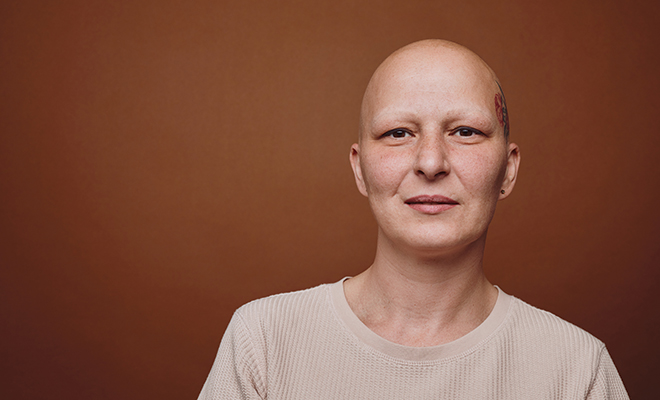
Tattoo Options for Breast Cancer Survivors
It’s the news no one ever wants to hear: breast cancer. After the shock wears off and the chemotherapy treatments start, you settle into another type of reality. Hair begins to fall out, leaving you depressed and shopping for wigs on the internet.
B ut what can be done about your eyebrows and eyelashes? Will your reconstructed breasts ever look normal again without nipples? How safe are permanent and semi-permanent tattooing, especially now with a compromised immune system? Many choices are available, but do your due diligence beforehand.
After cancer treatments, hair loss varies widely from thinning to patchy clumps that fall out; how much depends on a person’s genetic composition. Hair loss includes eyelashes and eyebrows, and many women want to forgo the daily hassle of painting on brows or applying false lashes that droop. Fortunately, there are semi-permanent options with fruit and vegetable-based pigments and permanent choices with traditional ink.
Microblading, a semi-permanent makeup technique, uses a cosmetic tattoo pen to make tiny notches that deposit pigment into the superficial layers of skin. The outcome is fuller, more distinct brows. With a skilled technician wielding the subtle microblading pen, ladies can choose from an assortment of diameters to control each stroke, achieving the desired thickness, color and shape. The process takes about two months from start to finish as there is a follow-up six to eight weeks later to tweak color, shape and fullness. Aftercare is minimal but the brow area needs to be kept dry for ten days post-procedure. With no down time and a reasonable price tag, this is a viable short-term solution as microblading lasts one to three years. Not everyone suffers from eyebrow loss, so wait until after chemo to gauge what type, if any, of cosmetic enhancement you may need.
While cancer patients are prepared for hair loss, losing eyelashes often comes as a shock. In addition to giving expression to the eyes, lashes protect the eyeball from environmental allergens and filter sunlight. Traditional fake eyelashes have their drawbacks; chemo patients often suffer from dryness and eye tearing, making them uncomfortable to wear, or they droop because there’s nothing to hold onto. Others may have allergic reactions to the eyelash glue. Breast cancer survivor Codilia Gapare created Eylure London C-Lash, which was designed for women who have lost natural lashes; it rests on a much thicker, transparent band so these falsies stay in place. Prescription Latisse® is another excellent possibility if there are some remaining hairs or for when lashes begin to grow back. Stay away from eyelash extensions; your remaining lashes after chemo are more delicate and fragile. Remember that bacteria can grow in an open tube, so be careful with mascara usage.
Perhaps you’ve undergone a mastectomy and now, glancing at your new profile in the mirror, discover you loathe the surgical scars left behind. For many women, getting realistic-looking nipples tattooed after mastectomy can be a new lease on life. “Studies have proven that restoring the breast mound and the nipple restores the woman’s sense of self. It’s something that’s often closely tied to her sense of femininity,” said plastic surgeon Dr. Neil Tanna, who specializes in breast reconstruction surgery and performs areola tattoos.
If you’re not undergoing reconstruction or areola tattooing, consider a mastectomy tattoo. Some survivors opt for colorful, meaningful breast tats that can decorate their entire décolletage or cover their chemo port scar. Anything the mind can imagine can be inked, such as a pink ribbon, flowers or a lucky ladybug. Be sure to consult with an experienced tattoo artist who will create on the canvas that is your body rather than just poorly cover up a scar.
How safe are these options? Although there’s not much scientific evidence about the long-term effects, survivors’ concern about contracting cancer from any of these permanent procedures appears unsubstantiated. In doctors’ offices and highly regarded tattoo parlors, the inks used are generally safe. Keep in mind that chemo changes how a woman’s skin interacts with both organic and ink pigments, so waiting until after treatments conclude is wise. Risk of infection may be higher after chemo, so be patient and use that time to conduct research. Check out various tattoo studios and artists to be sure they use hygienic practices, are licensed, and have experience dealing with breast cancer survivors. Check online client reviews of tattoo artists; or better yet, interview a couple of former clients. Whatever you decide, doctors recommend waiting two to five months after surgery before getting inked.
A final word: consult with your own physician for the green light to be certain that your incisions and any possible radiation-related skin conditions have fully healed. Face the future with confidence and know that you are stronger than you think—you are a survivor! ■
Sources: workingwomanreport.com, regionalcancercare.org, aedit.com, allure.com and goodhousekeeping.com.







